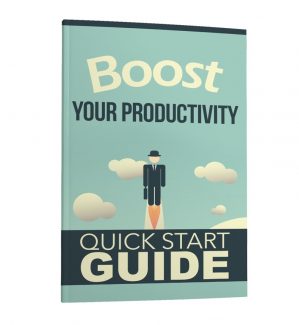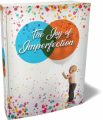 License Type: Master Resell Rights
License Type: Master Resell Rights  File Type: ZIP
File Type: ZIP
 SKU: 61068
SKU: 61068  Shipping: Online Download
Shipping: Online Download
Sample Content Preview
Quiet Your Mind And Focus
We need to be more proficient in our work to accomplish more. In many cases, people fail to be productive because they lose focus and let their minds wander, leading to a loss in productivity.
The key is to focus your mind on the task at hand and block out all other distractions and thoughts that are unrelated to the task at hand.
• Failure to put aside thoughts unrelated to the task at hand will only slow you down and lead to a higher probability of mistakes.
• Get a good night’s sleep every night to boost focus and productivity, reduce mistakes.
• Don’t let other issues or problems bother you.
Basic Ingredients Of Productivity
There are three basic ingredients to productivity:
• Time
• Energy
• Attention
Without all three of these ingredients your productivity will be lower than it can be, and you won’t achieve the amount of success you are expecting.
How To Measure Your Productivity
Dictionary.com defines productivity as “the quality, state, or fact of being able to generate, create, enhance, or bring forth goods and services.”
Labor productivity is defined as “the output volume divided by the labor input use.” Boost Your Productivity
• In other words, its the amount of effort and time that the worker puts in and how many units of production he/she produces in that time span.
If a worker produces one unit (say, one ebook) an hour and another worker produces two units (say, two ebooks) in one hour, then the second worker is two times more productive than the first worker.
Being more productive means being better able to manage one’s time, focus one’s attention on the tasks required, and/or utilize the energy necessary to complete the tasks required in the same time period as another worker.
In order to boost your productivity, you need to be able to produce more of the product or provide more of the service you deliver in the same amount of time or less than you have before.
When it comes to businesses, it’s not just your production, but the production of your workers who work for you, that account for your total productivity.
Start Laying A Productive Foundation
Firstly you need to eliminate all distractions from your work area and clear your mind of any doubts and/or worries you may have.
You also need to be totally focused and invested in the working process in order to produce the maximum number of products/content and/or render the most services within a specific time span.
Have a clear plan of what needs to be done in terms of tasks and projects and how to go about best doing them.
• In regards to employees/outsourcers, have an agenda of tasks and projects to complete and a time table on which you can expect them to complete them.
• In regards to employees/outsourcers, lay down the ground rules on what needs to be done and how quickly they should be done.
Implement Simple Time Management Techniques
You must manage your time as efficiently as possible in order to be as productive as possible.
Monitor your time very carefully and ensure you are working efficiently during the times you are working to ensure you are utilizing your time to the best of your ability.
• Note how long you think it will take you to complete a project on a piece of paper, in a text file, or in a spreadsheet file.
• Time how long it takes you to complete specific tasks.
• Time how long your work periods are, your breaks are, and how long any distractions are.
Use the clock on your computer and/or mobile device, or use an online timer to record the respective time periods.
Compare the time it took you to complete the project versus the time you expected; if you met or beat that time, reward yourself.
If you took longer than expected, review what slowed you down- was it distractions, lack of focus, task was more difficult than expected- then make adjustments.
Can make this into a game or challenge to where you challenge yourself to get more done in less time to improve your productivity.
Online timers have bells or other sounds that can help you use the Pomodoro Technique (15- to 30-minute work periods followed by 3- to 5-minute rest periods three times, then after the fourth 15- to 30-minute work period, a 15- to 30-minute rest period).








